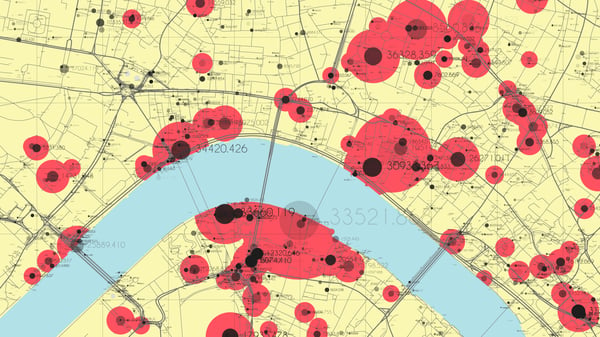4 Must-have Data Points for Dispatch-Billing Alignment and Maximum Reimbursement
Learning from Aviation Safety: Part 2 - Checklists
In 1935, a fatal airplane crash changed the aviation safety world
Was this information valuable?

In 1935, a fatal airplane crash changed the aviation safety world. It was at Wright Field near Dayton, Ohio, when the Boeing aircraft manufacturer and the U.S. Army Air Corps met to introduce the B-17 bomber. Two Air Corps pilots, a Boeing Chief Test Pilot and mechanic boarded the aircraft for a brief demonstration flight for many high-ranking officials watching from the ground. Of interesting note was the fact that Boeing didn’t want to take any chances of the aircraft having problems, hence the addition of the Boeing personnel that accompanied the pilots. Shortly after becoming airborne and beginning its climb, the aircraft stalled and crashed in a field.
Two on board lost their lives. The co-pilot survived, and his interview by the investigators proved to be the key in determining the cause of the crash. The investigators found that a critical pre-takeoff omission in the flight control had caused the aircraft to crash. It was further determined that technology on board this new type of aircraft was too complex for pilots to remember not what to do, but in the correct order to safely fly the aircraft. To address these issues, Boeing introduced a mandatory new tool for all pilots to use: a checklist. Since that day in 1935, pilots all over the world have been using checklists as a mandatory safety component that has proven to reduce crashes.

How Checklists Are Used in EMS Today
Today the checklist has expanded well beyond aviation and is commonly found in many different industries. The simple reason is it works is because it prevents lapses in memory in critical phases of certain high-risk job tasks. So, can checklists have a home in EMS? Most certainly!
For the purposes of this blog, I’ll focus on two patient safety concerns in EMS: Medication errors and stretcher incidents. I recently had the opportunity to view a couple of excellent videos produced by some of our colleagues. One was by Sedgwick County EMS in Wichita, Kansas. In these videos they simulate the administration of fentanyl for chest discomfort, one with no errors found and the other with a dosage error. What was interesting is they had a timer on the no error video so you see how long the cross-check was taking. It was a professional exchange between the clinicians, and looking at it from a patient perspective, must have been reassuring that safety and quality was a priority.
In another video produced by Jones & Bartlett Learning, the clinicians are administering aspirin to a patient. Again, a timer is used during the med check exchange between the clinicians and the patient. Certainly, time well spent to confirm the right medication is administered.
For stretcher safety, I found another video from Jones & Bartlett Learning in which cross-checks are used during the loading and unloading of the stretcher. It was a simple exchange between the clinicians that ensured all critical safety steps were in place before moving on to the next stretcher operation step. It was obvious that if the cross-check was done correctly, the exposure of risk to the clinicians and the patient was significantly reduced.
Read Learning from Aviation Safety: Part 1 - Crew Resource Management
How Else Could We Use Checklists in EMS?
While watching the exchanges in the videos above I kept asking myself how these cross-check would be accepted by todays EMS providers. It’s a totally different approach to safety that may take some time getting used to. Organizations that are deep rooted in a culture of safety should have little problem implementing checklists, while others may face challenges from staff. Proper education, medical direction oversight, and a good understanding of how and when to use checklists will be helpful.
An excellent book on this topic is The Checklist Manifesto – How to Get Things Right by ATUL Gawande M.D. The author shares his riveting story as a surgeon and some life and death cases that could have been fatal to the patient if it wasn’t for a surgical checklist. In his book, Gawande explains what checklists can and cannot do. He walks through a simplified and common sense approach that has proven itself time and time again in numerous industries. If you are contemplating checklists in your organization, I highly recommend this book.
References:
Medication Checklist Videos:
https://www.youtube.com/watch?v=qktIdQ86piI
https://www.youtube.com/watch?v=8-16kWQxsfQ
https://www.youtube.com/watch?v=8BW6UUrIEeU&feature=youtu.be
Stretcher Checklist Video:
https://www.youtube.com/watch?v=8iqNz2Qp7ZA
Related Posts
How EMS Agencies Can Reframe Need and Refocus Resources With Geospatial Analytics
How To Minimize Radio Chatter and Reduce Guesswork With Smarter Dispatch Resource Management
ZOLL Pulse Blog
Subscribe to our blog and receive quality content that makes your job as an EMS & fire, hospital, or AR professional easier.
ZOLL Pulse Blog
Subscribe to our blog and receive quality content that makes your job as an EMS, fire, hospital, or AR professional easier.




